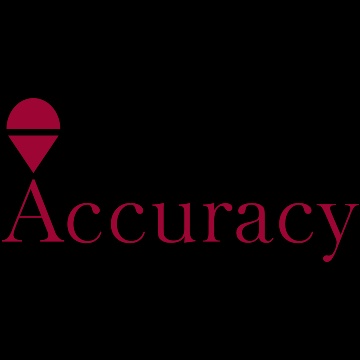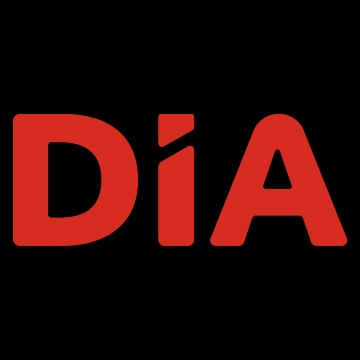
Artificial Intelligence & Data Science Bootcamp
Artificial Intelligence & Data Science Bootcamp

UNIQUE IMMERSIVE DATA SCIENCE AND AI EXPERIENCE
UNIQUE IMMERSIVE DATA SCIENCE AND AI EXPERIENCE
The Artificial Intelligence & Data Science Bootcamp offers you the chance to excel in Data Science and AI, two of the decade's most in-demand fields. You will learn to acquire, clean, structure, store, manipulate, analyze, and visualize data from diverse sources to solve complex business problems.
Additionally, you will gain expertise in Deep Learning technologies, focusing on Natural Language Processing (NLP), Computer Vision (CV), and Generative AI. This comprehensive program equips you with the skills to integrate Large Language Models (LLMs) with tools like databases and web interfaces.
want to know more?
MODULE 1: UNDERSTAND THE BASICS
Python Programming
- Data types and variable assigning
- Mathematical and logical operators and functions
- Loops and conditional code execution
- Advanced data structures (lists, dictionaries, data frames, etc...)
- Loading external modules and packages for data analysis (Pandas, Numpy)
- Working with files
- Calculating basic summaries and data transformations
MODULE 2: MATHS & STATS FOUNDATION FOR MACHINE LEARNING
Math & Stats for Data Science
- Introduction to data. Observational studies
- Experiments. Distributions and basic metrics
- Statistical tests and inferential statistics
- Introduction to Probability. The Central Limit Theorem. Conditional Probability
- Sampling and random variables. Continuous distributions
- Confidence Intervals and Hypothesis tests
- Linear Regression and multiple linear regression
MODULE 3: LEARN TO PREP ADEQUATE VISUALS
Data Acquisition, SQL & Visualization
- SQL querying databases
- Working XML, CSV and JSON files in Python
- SQL queries to import into Python scripts
- Exploratory data analysis
- Creating data visualizations in ggplot2
- Creating data visualizations in seaborn and matplotlib
MODULE 4: LEARN THE MAGIC OF DATA SCIENC
Machine Learning in Python
- Data cleaning and wrangling techniques in Python
- Basic models for regression and classification
- Feature selection in machine learning algorithms
- Machine learning packages in Python. (scikit-learn)
- Clustering algorithms
- Advanced machine learning models: Tree based models, ensemble models neural networks
- Model fine-tuning in Python
- Assessing statistical models (cross-validation, ROC analysis) in Python
MODULE 5: LEARN TO TRAIN DEEP LEARNING MODELS & GENERATIVE AI
Deep Learning and generative AI
- Understand the basic behavior of deep neural networks
- Gain familiarity with some of the most used frameworks for DNN: Pytorch and Hugginface
- Be able to build solutions to solve some of the most common NLP and CV problems: text and image classification, image segmentation, text and image generation and retrieval augmented generation (RAG)
- Put LLMs to work with external tooling thanks to LangChain agents
- Learn when and how to use vector databases
MODULE 6: TELL THE STORY WITH DATA
Communication and Data Storytelling
- Narrative structures in data storytelling
- Selecting audience-specific topics
- Public speaking workshop
- Giving winning presentations
- Influence & persuasion
OPTIONAL EXTRA ONLINE PROGRAM - GENERATIVE AI: UNLOCKING ENTREPRISE VALUE
This online course offers strategic insights into applying generative AI for digital transformation and enhancing enterprise value. Over four weeks, participants will engage in video lectures, interactive activities, and discussions to develop an effective generative AI adoption strategy aligned with business goals.
DURATION
4 weeks
FORMAT
Online
LANGUAGE
English
INDUSTRY VISIT
INDUSTRY VISIT
Industry visits are an essential part of the program—they provide you with firsthand knowledge of how international companies adapt their use of data science or machine learning to their day-to-day operations. You’ll hear from them directly as they demonstrate how theory is turned into everyday practice in the real business world. Below you can check out some of the multinational companies that came to visit and teach our students.
RESILIENCE: A KEY CLASS OF THE BOOTCAMP THAT HAS NOTHING TO DO WITH DATA SCIENCE
RESILIENCE: A KEY CLASS OF THE BOOTCAMP THAT HAS NOTHING TO DO WITH DATA SCIENCE
Meet Rodrigo, the professor of a popular course amongst students of the Bootcamp. His course on Resilience touches upon some of the key pillars on which is successful career (and life) are built, and is part of an ongoing effort by IE to continue to think outside of the box in order to maximize the success of its students.
CAREER SESSIONS
CAREER SESSIONS
Are you ready to make huge strides toward redefining your career? Join our career sessions to learn how to present your best self in interviews when applying to data jobs, how to adapt your CV and cover letters to the industry, as well as discover the many other ways that we at IE University can help you advance your career.
FIRST TERM
During the first term, the sessions will introduce you to developing your job-seeking skills, improving your CV and understanding the different types of assessments that companies use to hire employees:
- Intro to Talent & Careers: Tools and Resources to Find a Job
- Job Strategy: Getting in Top Jobs
- Professional Branding: How to Get Headhunted Online
- CV and Cover Letter Workshop
- Online Assessments: Aptitude Tests, Personality Tests, Recruitment Games and Business Cases
SECOND TERM
In the second term, the sessions will focus more on helping you ace your interviews and respond to intricate questions. Not only that, but you will learn how to carry out real-world business cases and, most importantly, how crucial it is to network with people around you.
- Hidden Job Market: Networking for the Right Contacts
- Acing Interviews: Face to Face and Online
- Assessment Center: Performance in Real Business Situations
- Cracking Technical Interviews
- Building your Tech Portfolio on GitHub
THIRD TERM
Finally, during the third term, the sessions will highlight the important information that you learned throughout the bootcamp. Furthermore, you will realize how important it is to make powerful connections and how they can help you search for your ideal job position.
- Job Strategy II
- Alumni Panel: Experiences & Networking
Frequently Asked Questions
Frequently Asked Questions
What are the main topics covered in the IE Artificial Intelligence & Data Science Bootcamp?
The main topics covered include Python programming, applied mathematics and statistics, machine learning, data extraction and visualization, and data storytelling.
How are the classes structured in the IE Artificial Intelligence & Data Science Bootcamp?
The classes are structured in modules that combine theory and practice, with a strong focus on applying learned concepts to real-world projects.
What teaching methodologies are used in the IE Artificial Intelligence & Data Science Bootcamp?
Teaching methodologies include theoretical sessions, practical exercises, group projects, and company visits, ensuring an immersive and applied learning experience.
How flexible is the program in terms of scheduling to accommodate my work responsibilities and personal commitments?
The program is flexible and can be adjusted to accommodate participants' work responsibilities, offering a balance between live sessions and autonomous work.





